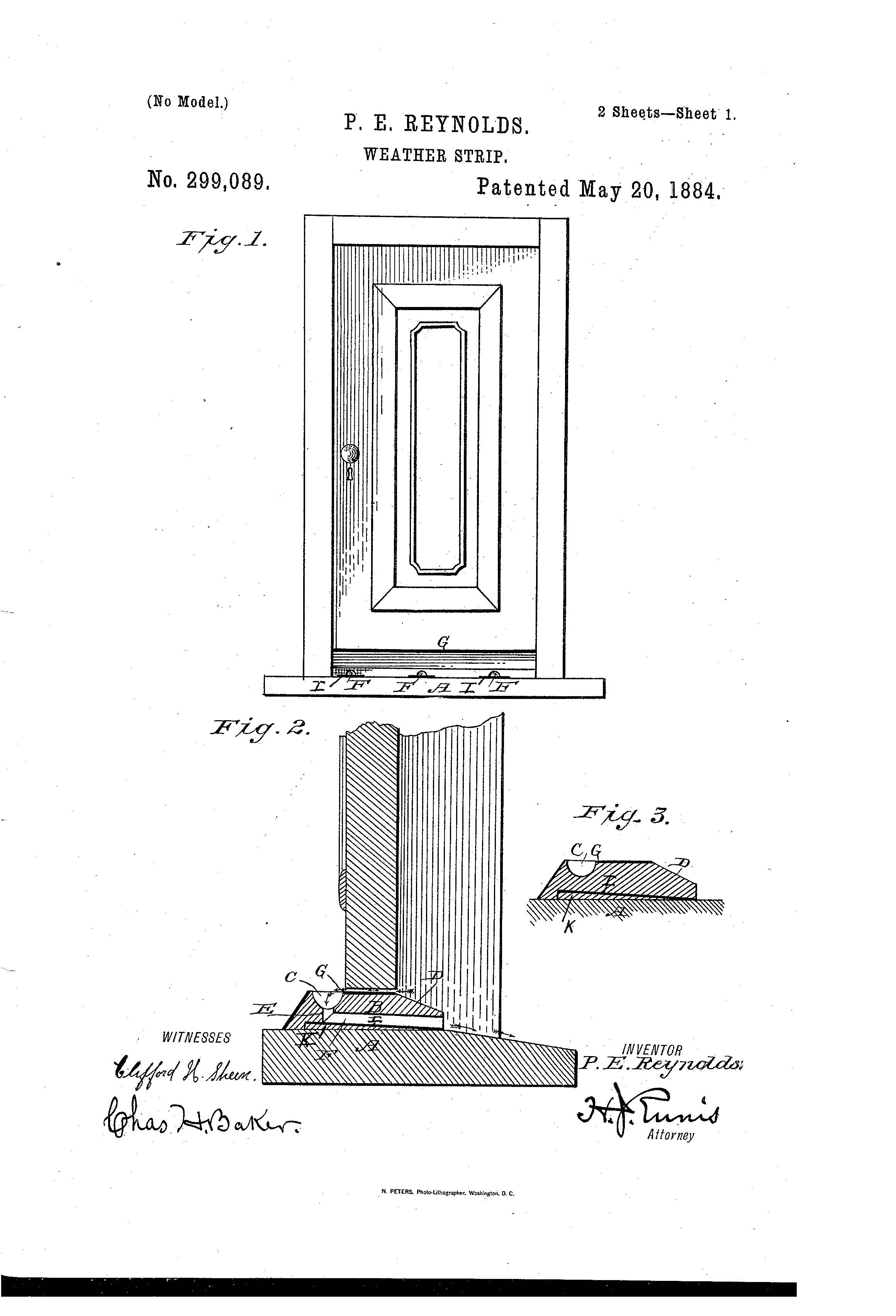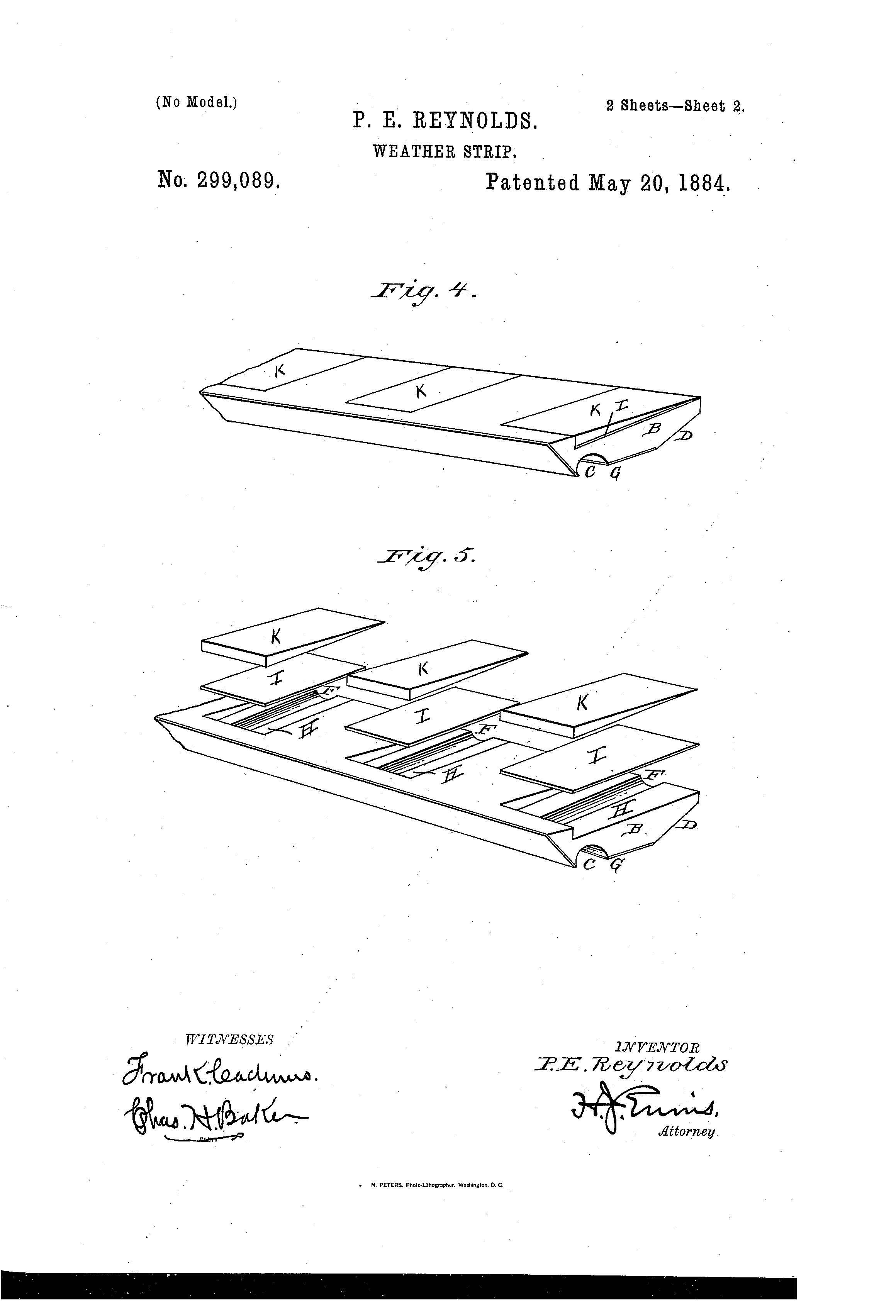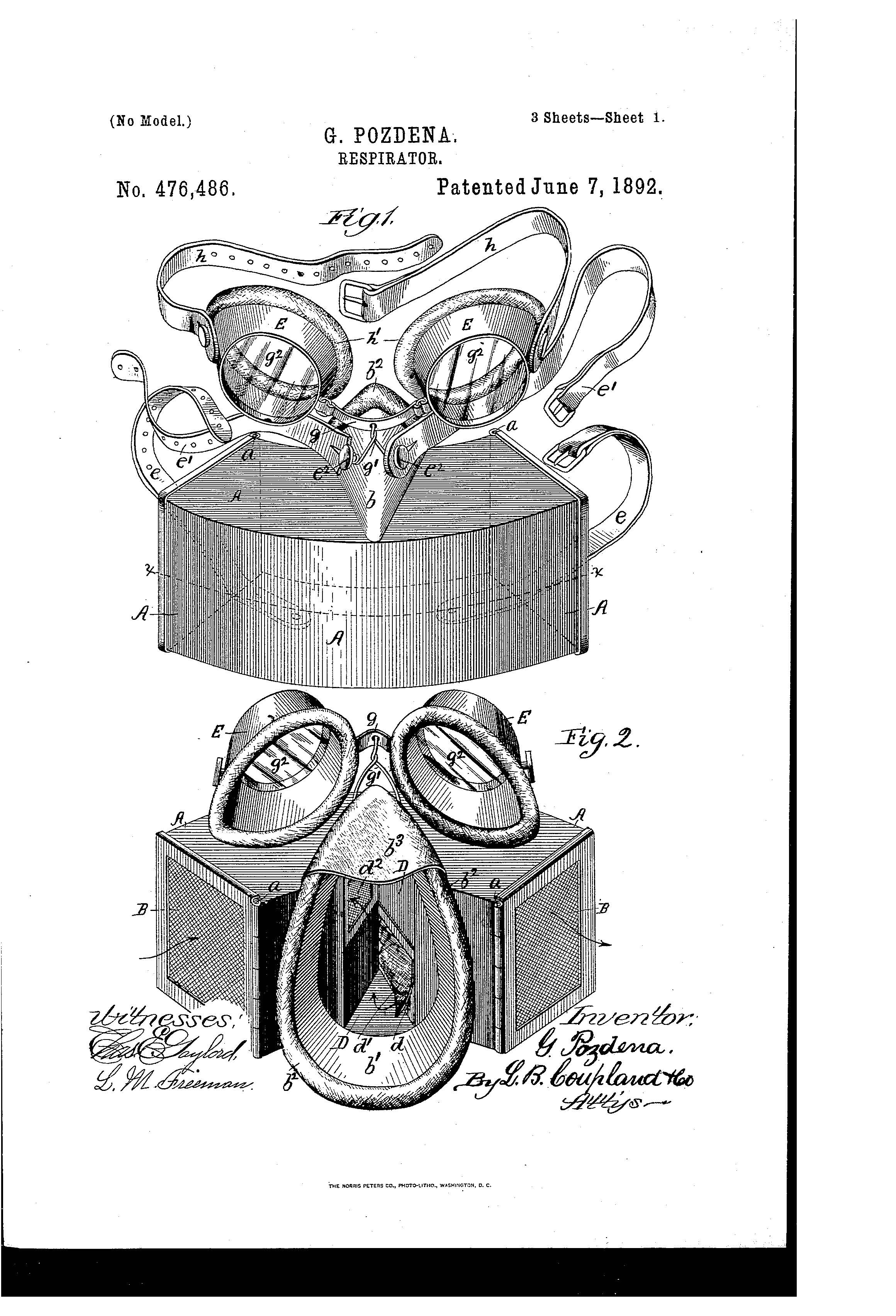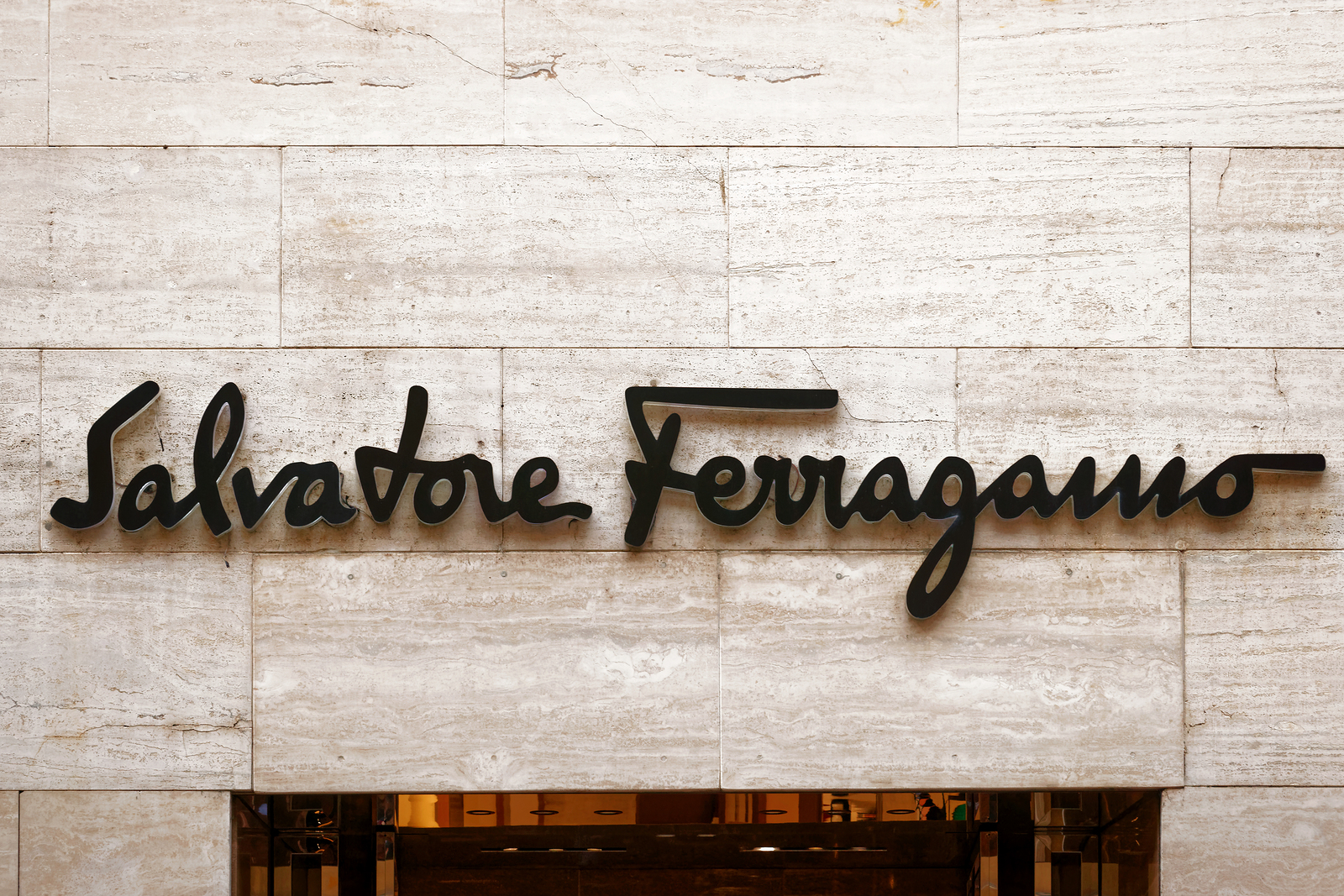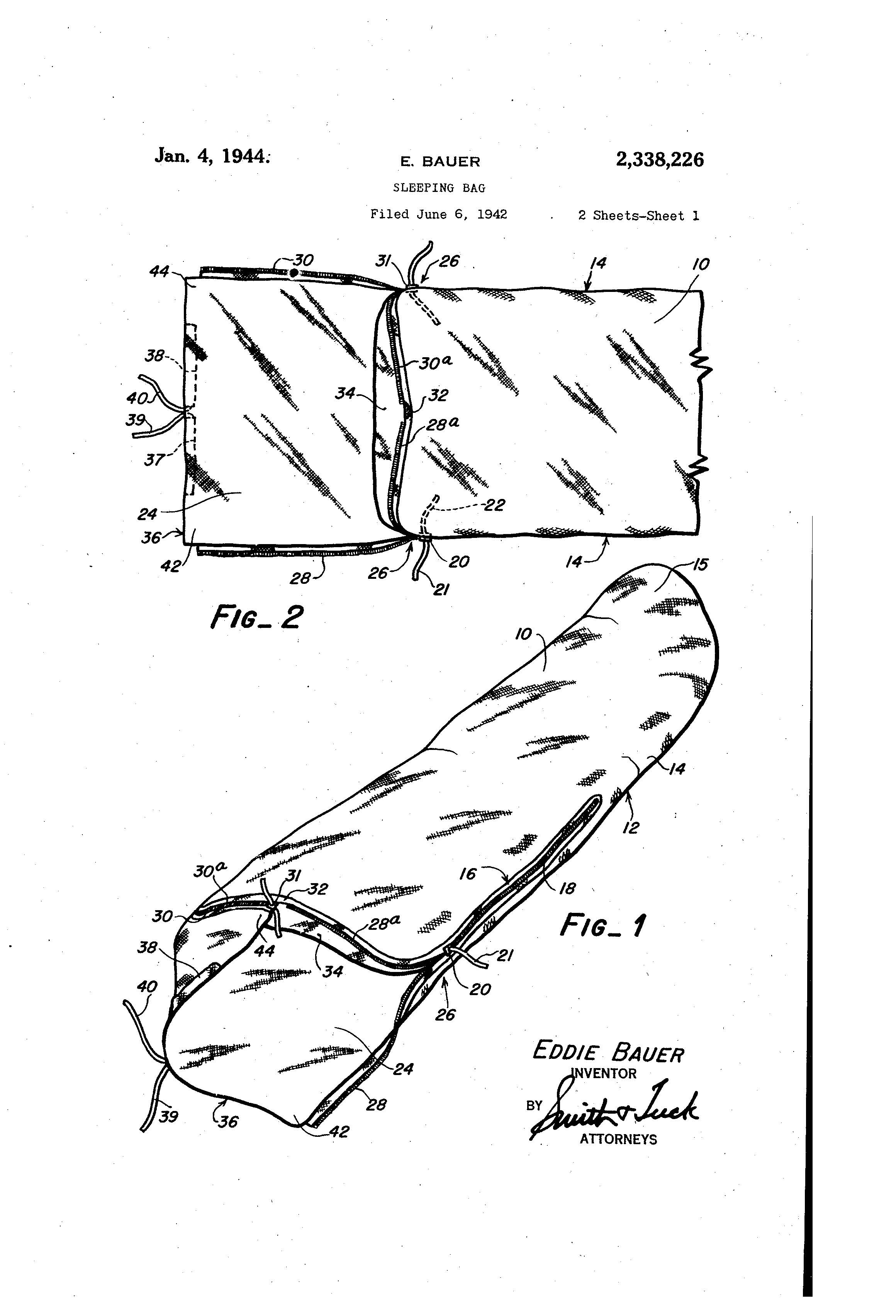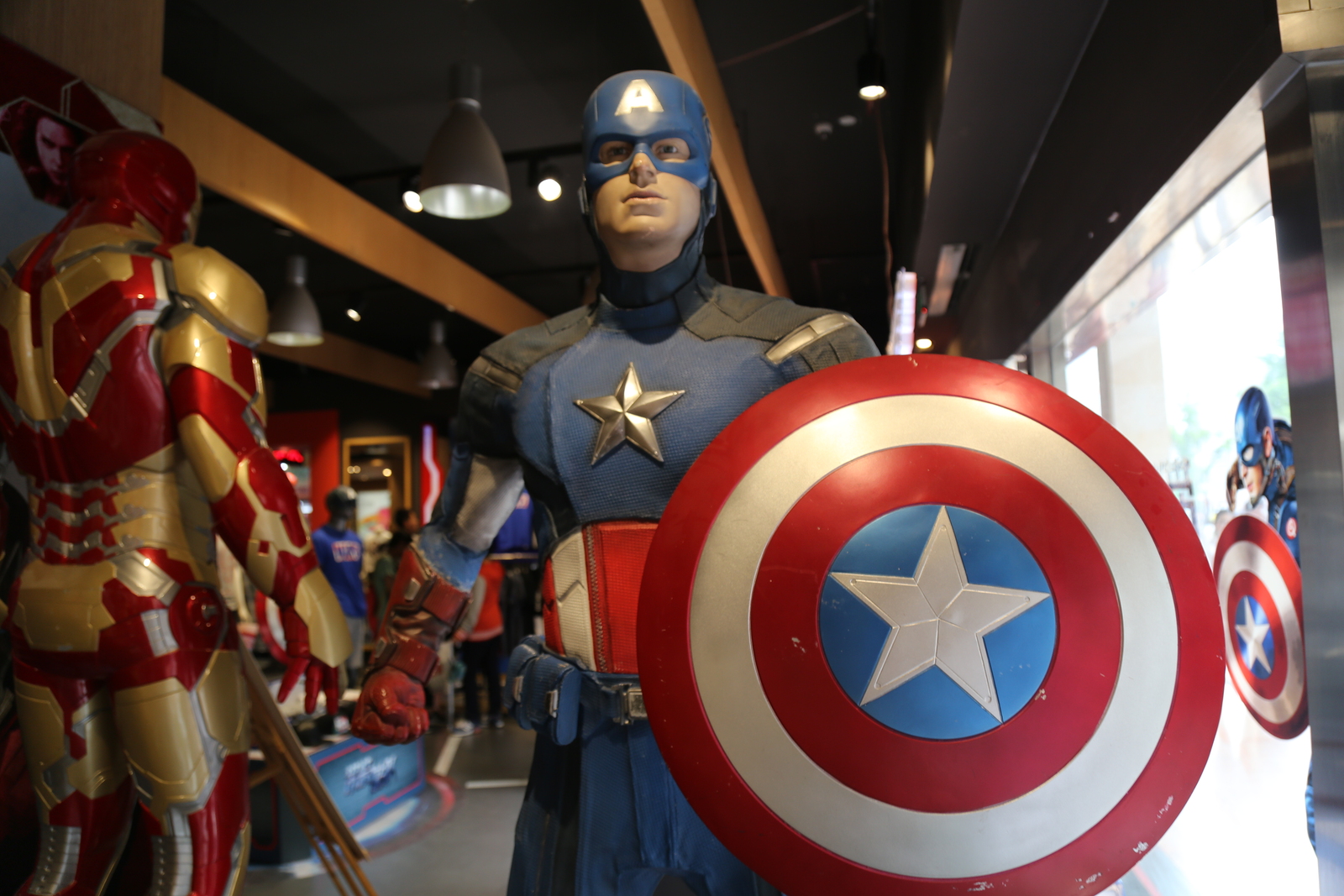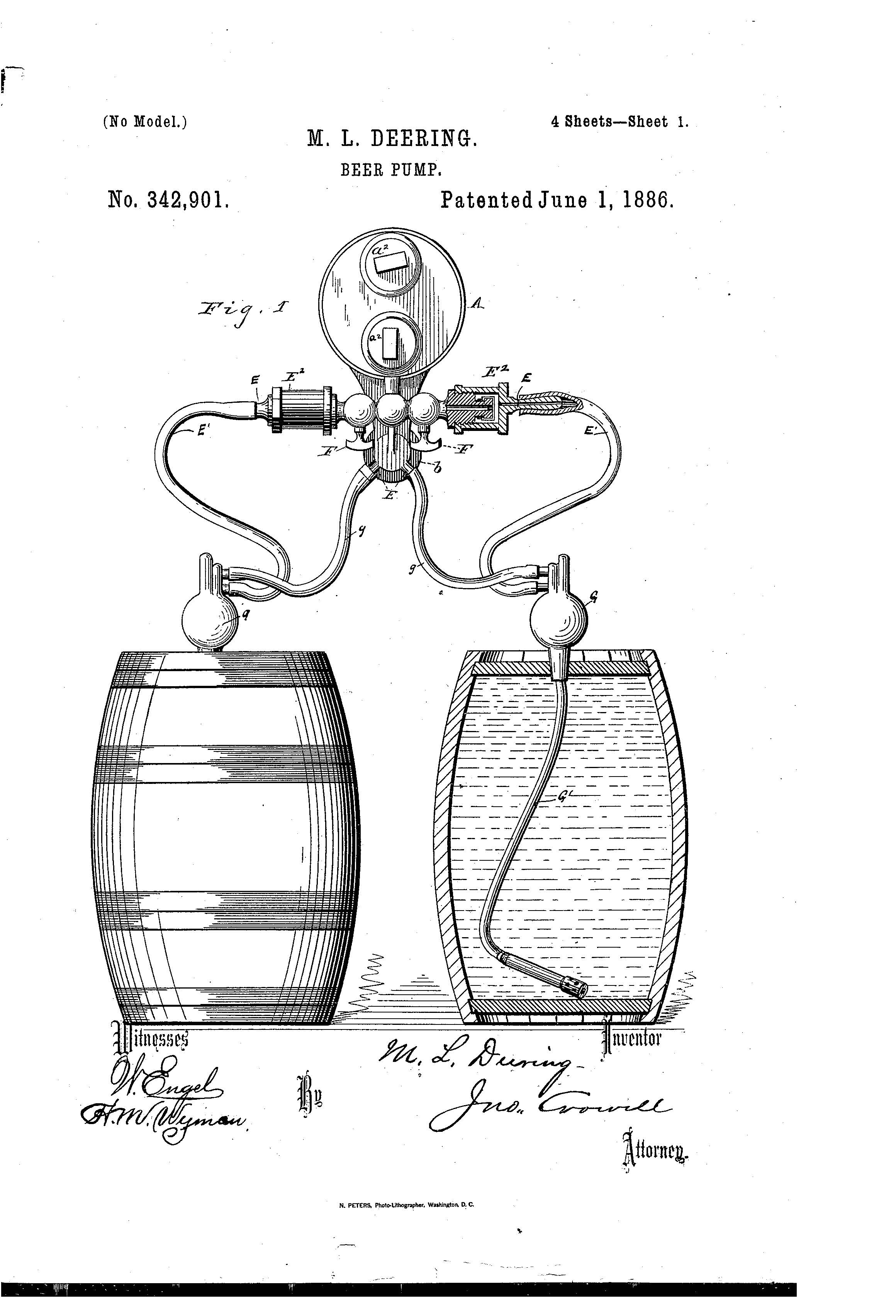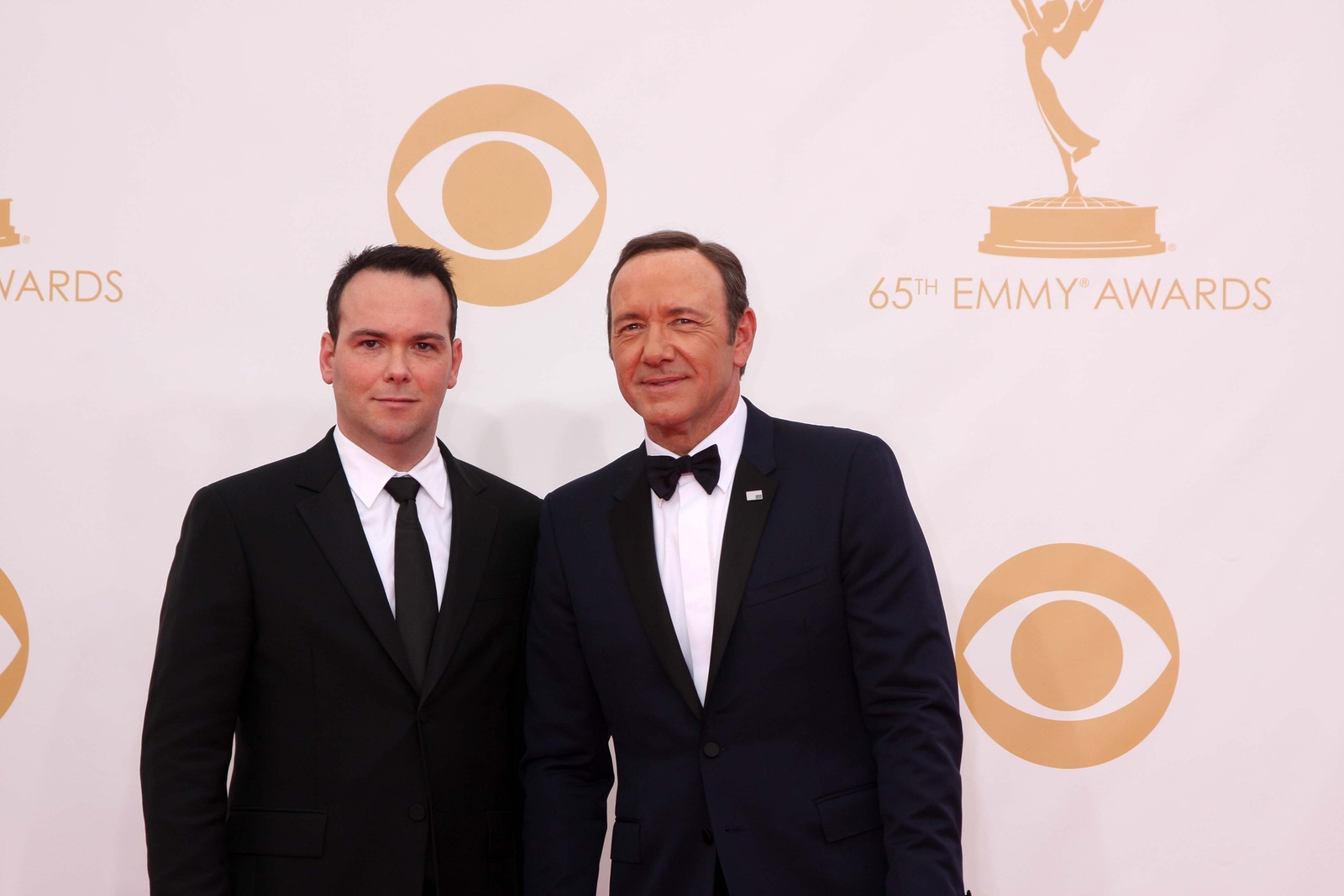Patent of the Day: Respirator
On this day in 1892 Gustave Pozdena was granted the patent for Respirator. U.S. Patent No. 476,486.
This invention relates to that class of devices used in protecting the respiratory organs from smoke and noxious gases, and has for its object to provide and arrangement of this character for covering the face, so that the wearer is enabled to remain for an indefinite time in an atmosphere charged with smoke or other deleterious gases without inconvenience or injurious effects.
The Device is more especially intended for the use of firemen or other persons when compelled to pass through smoke in saving life or property, but is also adapted for the use of workmen in factories or other places where the air is charged with poisonous gases or dust-laden with matter of a dangerous character. The construction also makes provision for the protection of the eyes as well as the mouth and nostrils.



Salvatore Ferragamo v. Vince Ferragamo
The luxury Italian goods designer, Salvatore Ferragamo SpA, is suing former Los Angeles Rams and University of Nebraska Cornhuskers quarterback Vince Ferragamo for trademark infringement. Salvatore Ferragamo claim Vince Ferragamo committed trademark infringement by opening a winery in Southern California in his namesake, Tenuta Di Ferragamo.
In the suit filed in Manhattan Federal Court, Salvatore Ferragamo alleged the winery is “likely to cause consumer confusion” and “dilute the Plaintiff’s trademarks, which include two federally registered trademarks for wine.” The suit goes on to claim “the defendants' acts have caused, and will continue to cause, irreparable injury to Salvatore Ferragamo."
The Ferragamo Family, since the 1990’s, has owned a winery in Tuscany known as Il Borro. They have accused Vince Ferragamo of illegally selling wine under the name Tenuta Di Ferragamo. On the winery’s website Vince uses images from Tuscany and the Italian countryside even though the winery, which began making wine in 2010, is in fact located in California. Salvatore Ferragamo’s family claims the images from the website will confuse consumers. Salvatore Ferragamo’s family alleges it has owned the trademark rights to the Ferragamo name for beverages since 2006.
Salvatore Ferragamo is also taking issue with the internet domain name used by Vince Ferragamo and associated with his winery, www.ferragamowinery.com.
Salvatore Ferragamo asserts that Vincent has ignored numerous cease-and-desist demands. This lawsuit is directed at halting alleged infringing activity, recouping damages and alleged illegal profits from wine sales.
The case is Ferragamo SpA v. Ferragamo Winery et al, U.S. District Court, Southern District of New York, No. 16-03313.
Patent of the Day: Sleeping Bag
On this day in 1942 Eddie Bauer filed the patent for sleeping bag. The patent was later granted on January 4, 1944 as U.S.Patent No. 2.338.226.
It is well known that the sleeping bad or sleeping envelope designed to encase the body in an insulative manner is a highly useful sleeping garment and is on that lends itself readily to use by outdoorsmen, troops and the like by reason of its compactness and ease of carrying, as well as its tightness. There has been a long felt need, however, for such a sleeping garment. This is especially true in the colder climates, where it is desired to protect the head as well as the body against the cold, wind or snow, to limit the exposed surfaces only sufficient for the purposes of respiration. According to current design of sleeping bags for the United States Army for troops, the usual elongated envelope has provided, adjacent the upper or open end, a triangular hood that is formed to partially enclose the head, and having an opening through which the face and nose may be exposed. For access to such a sleeping bag, from the lower edge of the face opening downward medially, the bag is slit and adapted to be fastened, either by a slide fastener or laces, snaps or the like. This construction has several obvious disadvantages. One such disadvantage is that the triangular portion of the sleeping bag is difficult to produce as well as to roll into the remainder of the envelope when it is desired to pack the bag in a roll. Another and serious disadvantage is the fact that the medial slit and its closure lie directly down the chest and stomach of a person using such a bag. Generally, the insulating filler of the bag tapers out at the edges of this slit and a cold spot or region results, due to the fact that the insulation is not heavy enough along the closure in comparison to the remainder of the bad, and discomfort is a definite result. A further disadvantage lies in the fact that such a bag is hard to get into, as the user must insert his feet and torso through the slit provided, slip the hood over the head and fasten the slit. A real disadvantage arises when the user is getting out of the bag, due to the difficulty of opening the slit and of removing the hood.


Will Disney Sue Wanda City Over Disney Characters
Walt Disney World “The Happiest Place on Earth” may have some competition with Wanda City in China. Wanda City spans over 2 square kilometers, it features a theme park, a movie park, an aquarium, hotels and retail stores. Not only is it trying to unseat Disney as the world’s largest tourism operation it is also being accused of stealing popular Disney characters. Snow White and Captain America have been spotted around Wanda City posing for pictures with guests and Disney is prepared to take action. “We vigorously protect our intellectual property and will take action to address infringement” Disney said in an emailed statement. They went on to say “our characters and stories have delighted generations, these illegal and substandard imitations unfortunately disappoint all who expect more.”
In a statement issued Monday the 30th of May, Wanda City said “the non-Wanda characters were operated by individual stores within Wanda Mall. They do not represent Wanda”. Via Law Corp. director Wang Yingyu, said "There’s more than a passing similarity between the costumes seen at Wanda’s park and designs registered by Disney. Legally, the bottom line is that the owner of a space is responsible for infringement that has occurred, unless they argue that they cannot exercise control over their tenants -- which would require thorough proof that they have done all they can to control the situation.”
According to Yingyu “The issue in China has always been that damages awarded for infringement are generally not high,". As of right now Disney has not proceeded with legal action but they might want to as a matter of principle to dissuade other potential infringers.
With China’s estimated $610 billion dollar tourism industry, which is expected to double by 2020, the rivalry between Walt Disney Co. and Wanda Group Co. may just be getting started.
Patent of the Day: Beer Pump
On this day in 1886 Mark L. Deering was granted the patent for Beer Pump. U.S. Patent No. 342,901.
This invention relates to improvements in beer-pumps in which a faucit made double or quadruple, as the case may be, according to the number of barrels that it is desired to draw from, is operate by a single air-pump.




Patent of the Day: Adhesive Tape
On this day in 1930 Richard Gurley Drew was granted the patent for Adhesive Tape. U.S. Patent No. 1,760,820.
This invention relates in general to adhesives, adhesive compositions or adhesive sheets or coatings; more particularly to pressure energizable adhesives, adhesive sheets or coatings, preferably water insoluble and normally non-drying.
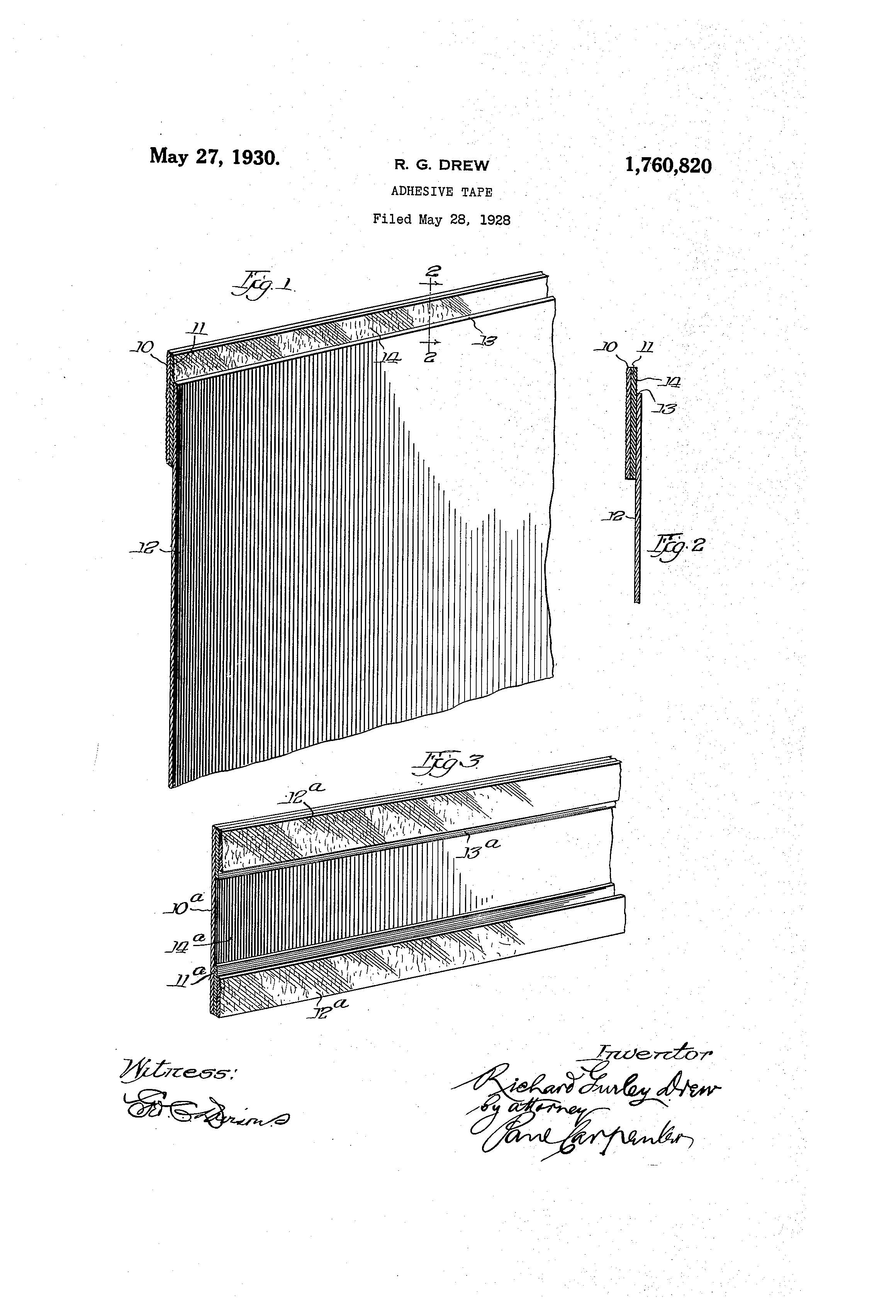
Patent of the Day: Gun for Shooting Marbles
On this day in 1903 Sylvester H. Strasser was granted the patent for Gun for Shooting Marbles. U.S. Patent No. 729,444.
The object of this invention is to construct the barrel of the gun in a simple manner from sheet metal, at the same time adapting such barrel to receive and withstand the impact of the head of the plunger which throws the marble.
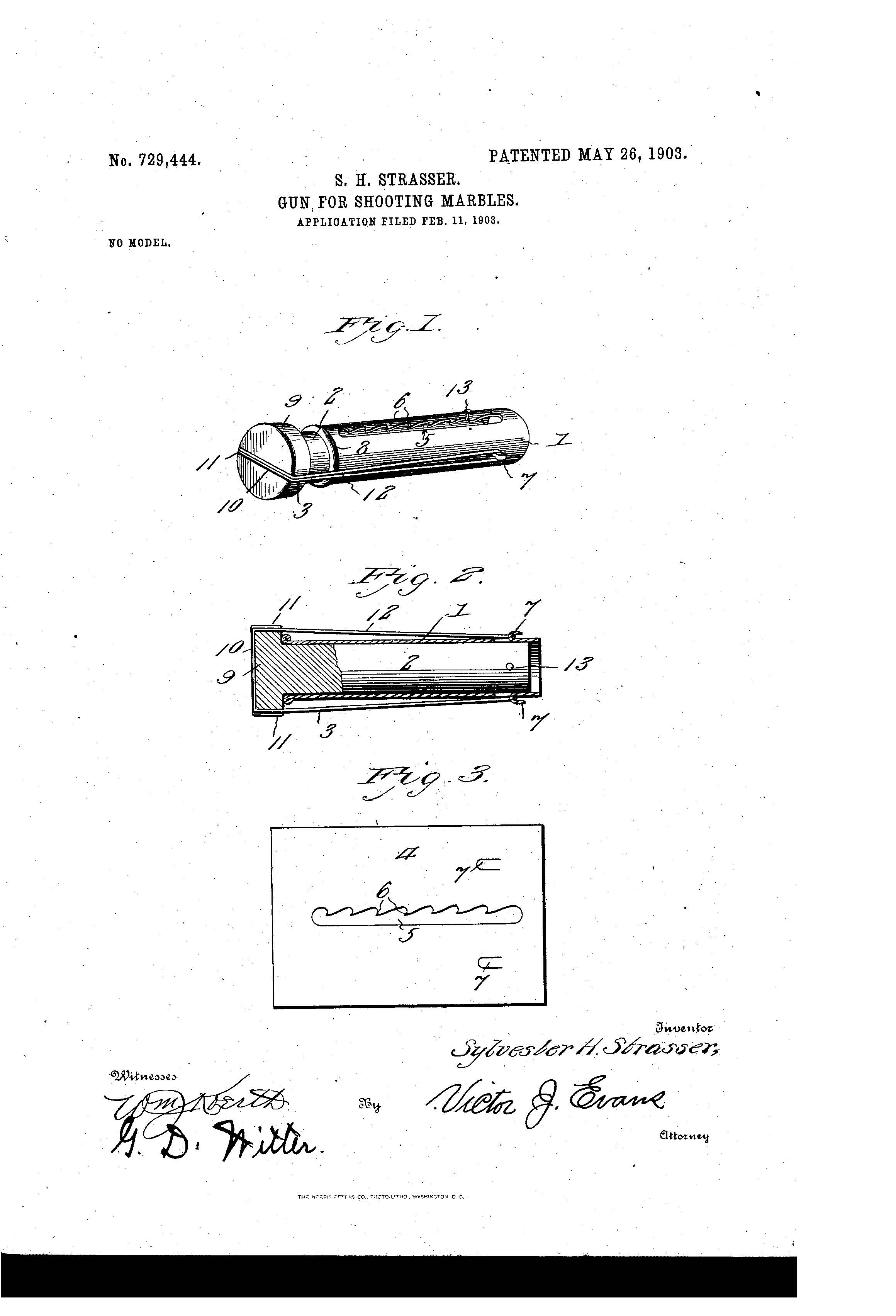
Inventor/Patent Holder Added to Kevin Spacey’s and Dana Brunetti's Resume
Kevin Spacey, best known for his Oscar winning roles in Unusual Suspects, American Beauty, and the Netflix series House of Cards where he stars as President Frank Underwood, can now add inventor and patent holder to his resume.
Kevin Spacey and longtime friend and co-worker Dana Brunetti were granted the patent for “Systems and Methods for Implementing Mail Delivery” on April 5, 2016, as U.S. Patent No. 9,306,887. The abstract states, “The invention relates to systems and methods for managing emails where an email server that may comprise one or more computer systems, and which may be part of an email system, receives an email addressed to a specified first user. The email server may analyze the received email and access one or more electronic databases, which may comprise information related to one or more respective registered users of the email system. The databases may be stored on one or more computer-readable storage media operatively connected to the email server.”
This idea emerged for many reasons, the main one being the amount of email Spacey and Brunetti received. Spacey and Brunetti would become inundated with emails and became frustrated after having to change their email multiple times to avoid unwanted messages.
According to Brunetti, “It is like having a digital doorman at a velvet rope. It allows in only the ones it knows or whoever is on the list and sends the others away with a message telling them they’re not approved. If they’ve been given a PIN or other access they can approve themselves. If they’ve been emailed by the user they’re pre-approved so their replies can get through and they won’t know the difference, but anyone can always be unapproved at any time.”
Brunetti went on to discuss how this invention could be a great business tool for “agents, attorneys, managers, etc. to stop getting unsolicited submissions or other unwanted contact from people like stalkers of client.”
Patent of the Day: Nursing Bottle Holder
On this day in 1927 Theresa Nuernberg filed the patent for Nursing Bottle Holder. This patent was granted May 22, 1928 as U.S. Patent No. 1,671,085.
The object of this invention is to provide a device of this character which maybe conveniently attached to a baby carriage or to any other suitable support, and which is capable of convenient universal adjustment in order to dispose of the nursing bottle which it holds at the proper angle.
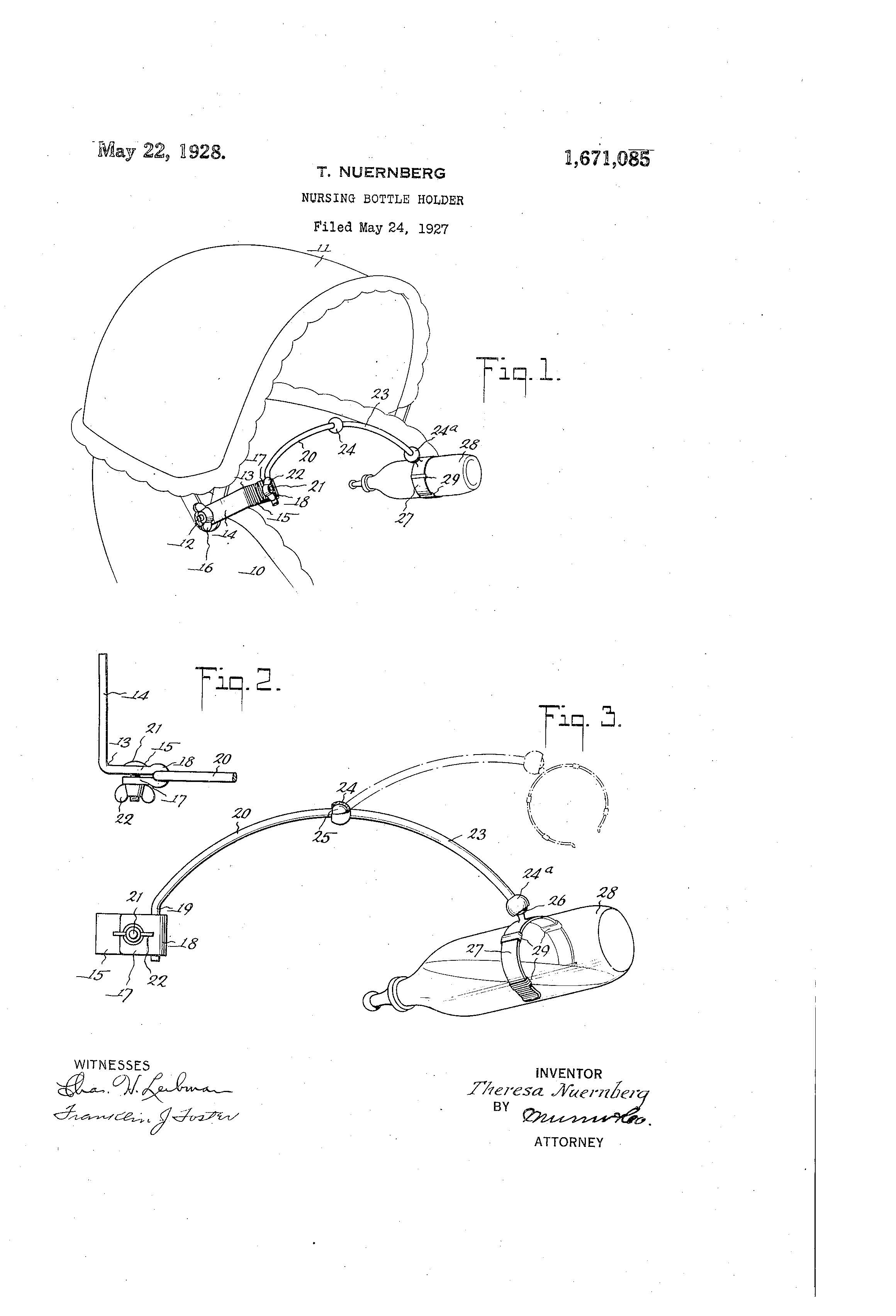
Patent of the Day: Medical Ozonizer
On this day in 1905 Marius Otto was granted the patent for Medical Ozonizer. U.S. Patent No. 790,655.
This patent relates to a process of ozonization for therapeutic purposes.
The medical ozonizer usually consists in principle of a small glass tube containing ozone, which is produced by Ruhmkorff coil, itself being operated by an ordinary vibrator or by a Wenhelt break; but reduced to these elements the ozonizer placed in the hands of patients presents a certain danger, because of the violence of the shocks of the Ruhmkorff coil. To obviate this serious drawback the Medical Ozonizer was invented.
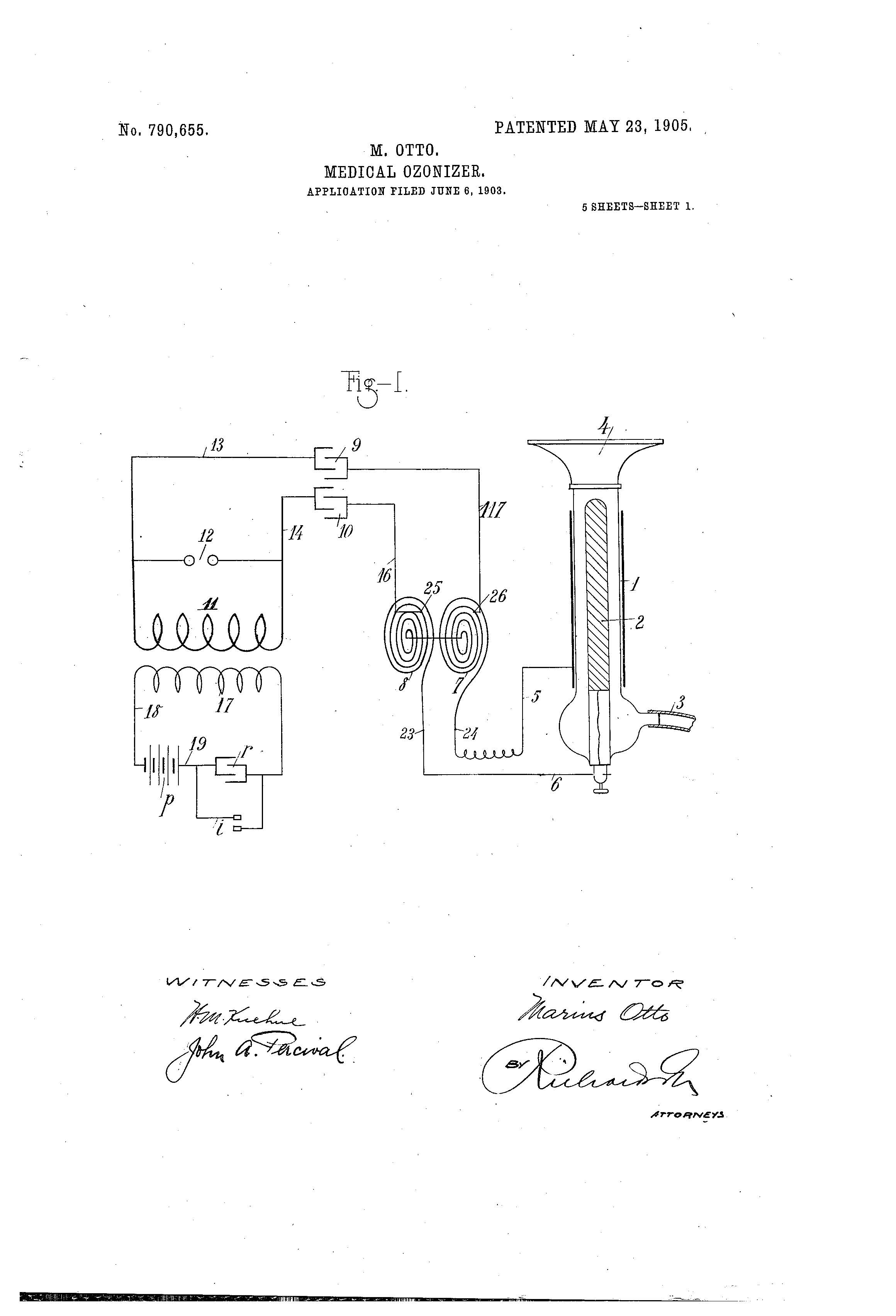
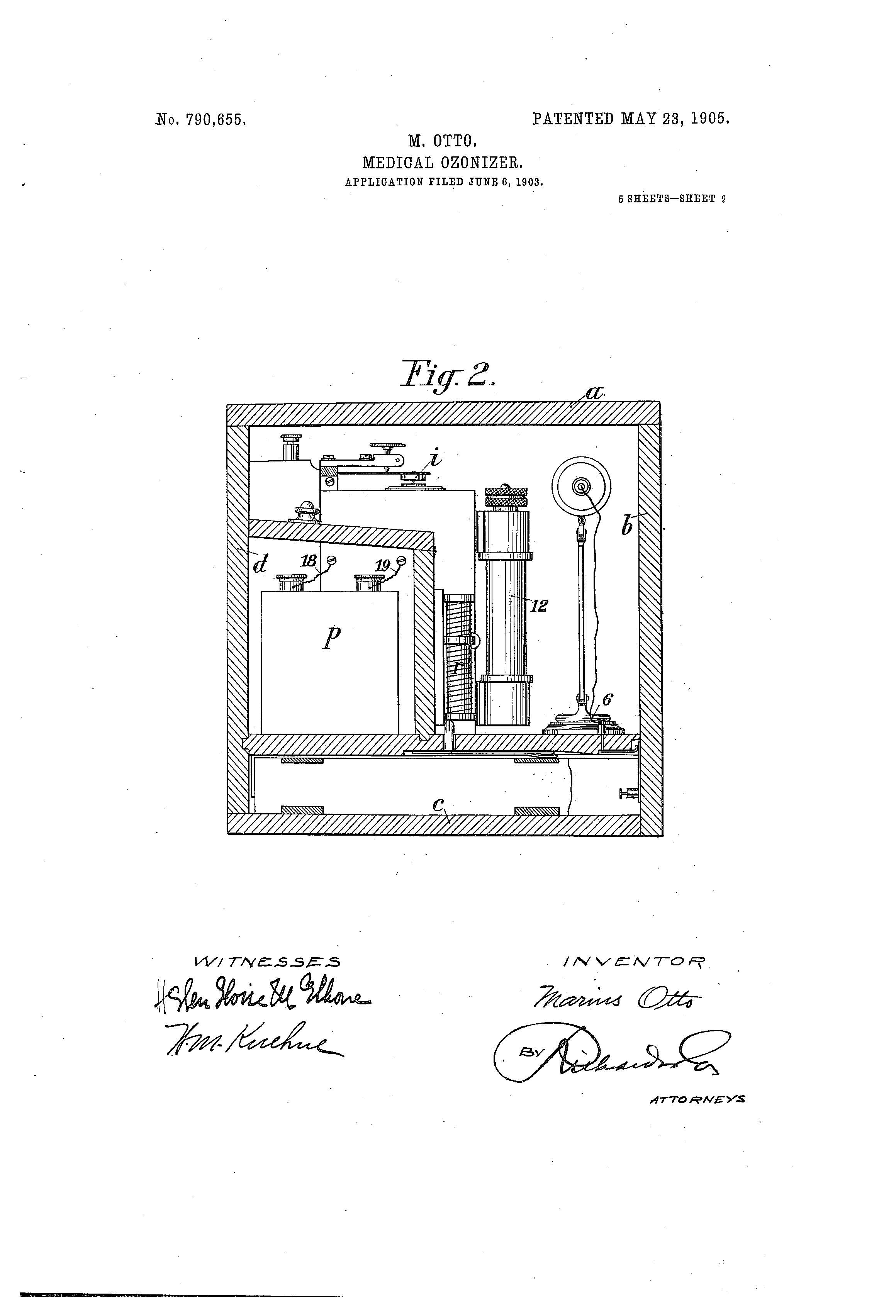
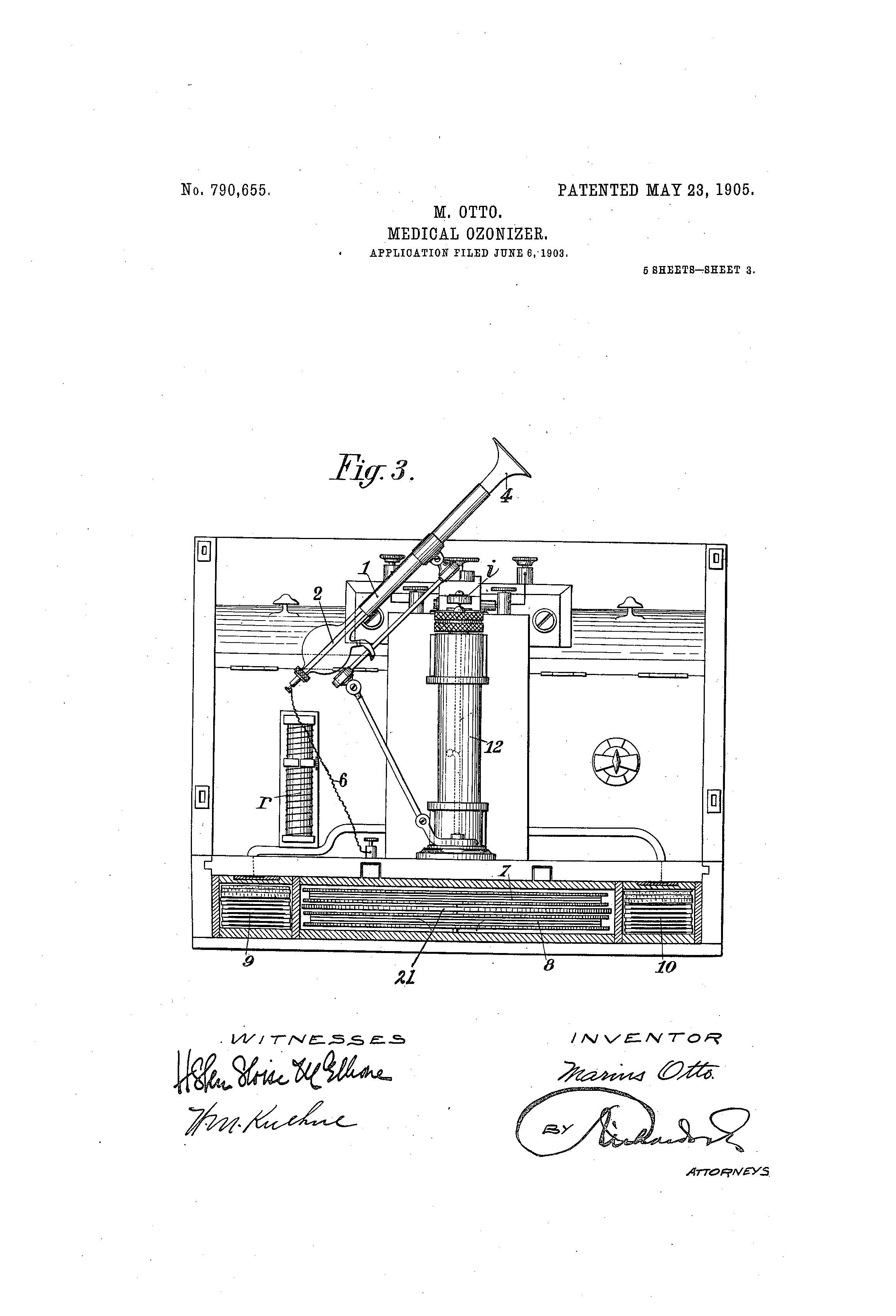
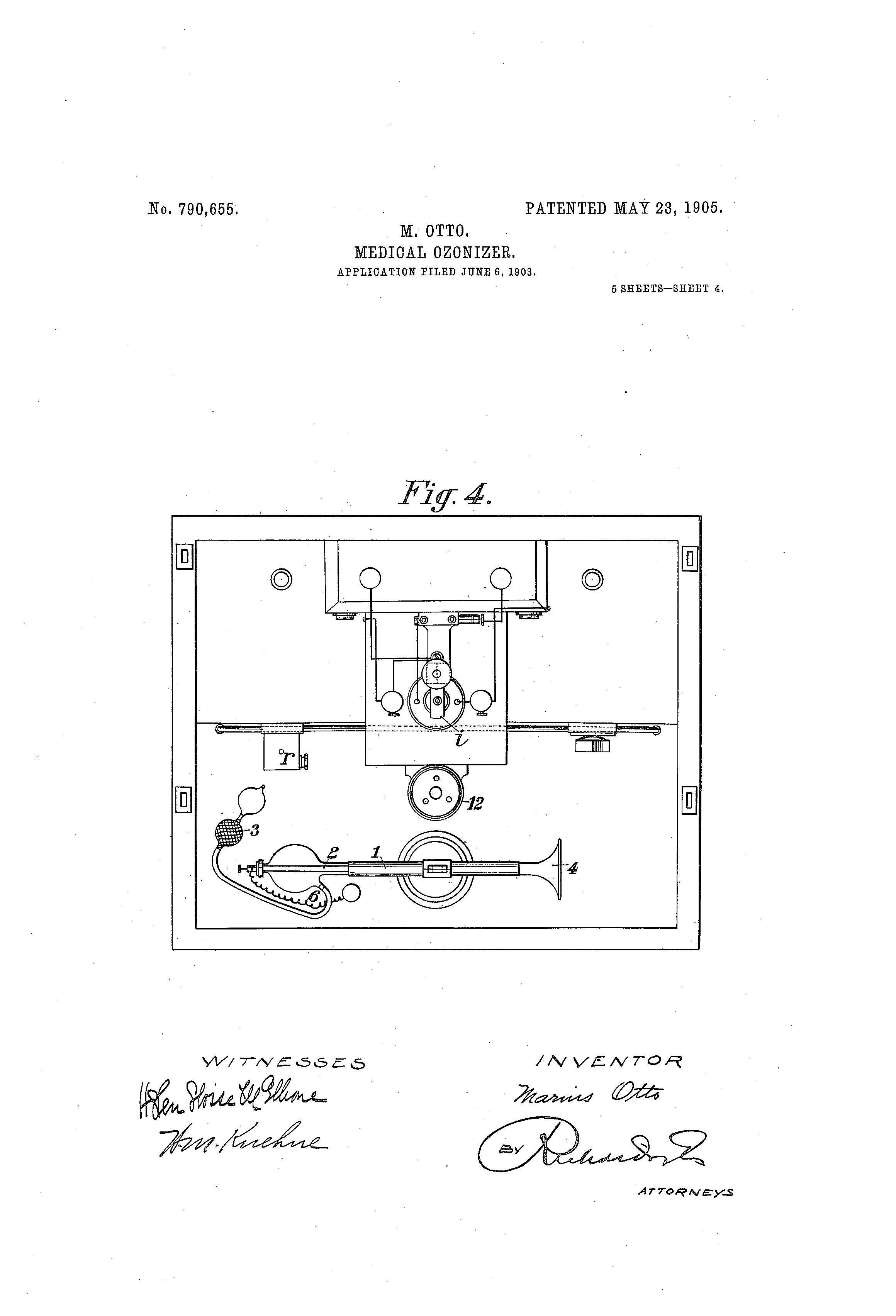
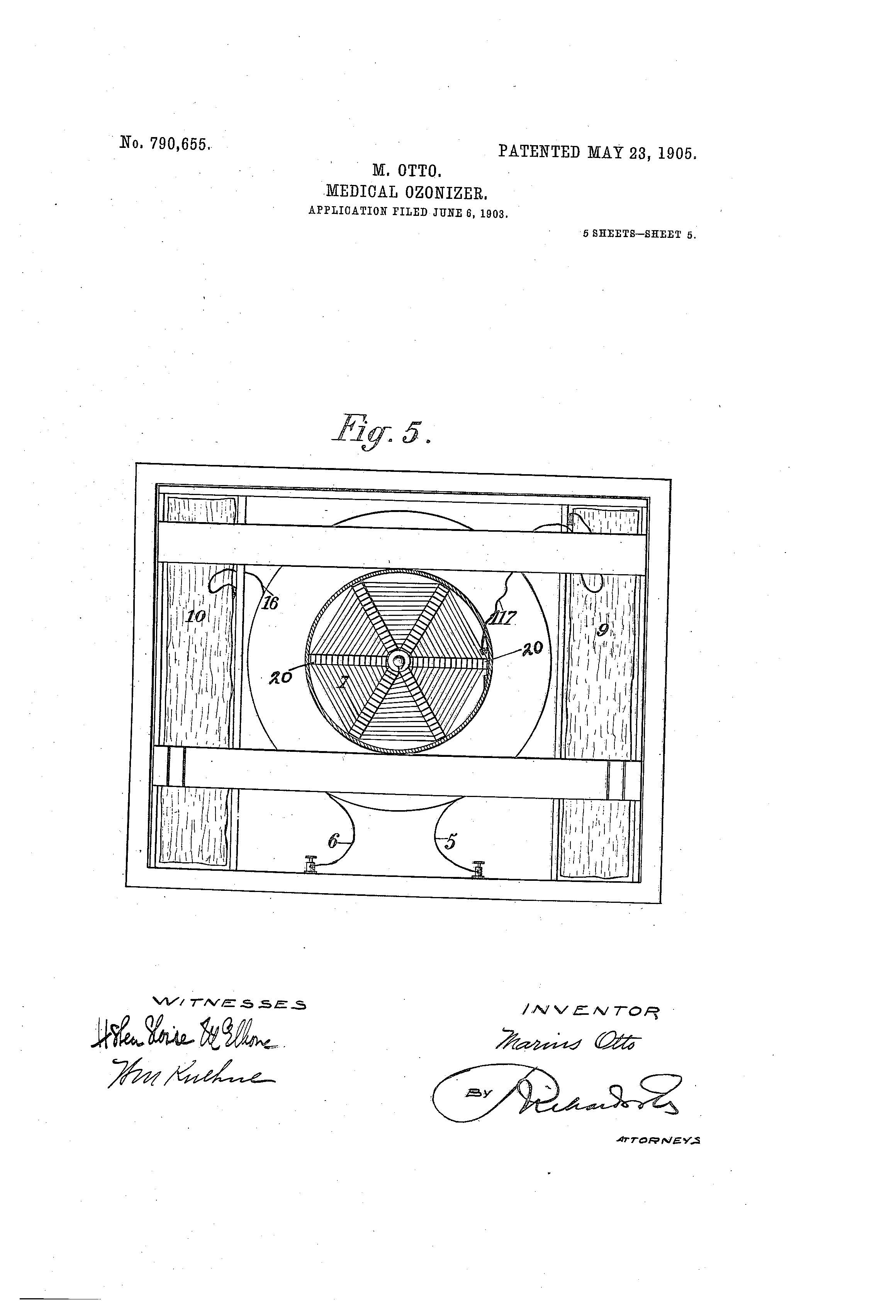
Enfish, LLC v. Microsoft Corp.: The Federal Circuit Finds Another Computer-Implemented Invention Patent-Eligible
According to Title 35, Section 101 of the United States Code, “whoever invents ... any new and useful process, machine, manufacture, or composition of matter ... may obtain a patent therefor.”[1] This language became federal law in 1952, when less than a handful of UNIVACs were in operation and the term “software” may not have even existed. So where in that sentence does software, as we know it today, fit? Apart from the question of whether a given program or application is patentable (in the sense of being novel and non-obvious) is software even patent-eligible subject matter, or should it be dismissed entirely from consideration?
The answer: it’s complicated. While the USPTO has granted patents on software over the past few decades, neither Congress nor the Supreme Court has clearly stated whether or not software—all of it, some of it, none of it—constitutes patent-eligible subject matter. However, Supreme Court precedent[2] has established a few specific exceptions to the patent-eligible categories listed above: laws of nature, natural phenomena, and abstract ideas are patent-ineligible subject matter. In Alice Corp. v. CLS Bank[3], the Court applied a test borrowed from its earlier ruling in Mayo v. Prometheus[4] to distinguish patents claiming these exceptions from “patent-eligible applications of those concepts”. The first step was to determine whether the patent at issue was directed to “one of those patent-ineligible concepts”. (Was this an attempt to patent an abstract idea?) If so, the second step was to consider whether additional elements—an “inventive concept”—“transformed the nature of the claim” from a patent upon the ineligible concept into a patent-eligible application.”
Note the emphasis above on application. For example, clearly you couldn’t patent π; to do so, in the Court’s eyes, would “impede innovation more than ... promote it” by “tying up the future use” of π, even for a limited time.[5] However, if you were able to apply π in some transformative way (via a device that, say, asks you for a whole number x and then applies π to slice a round pizza into x equivalent slices[6]) you’d have patent-eligible subject matter.
The Court determined that the claims in Alice were “drawn to the abstract idea of intermediated settlement”, which was “a fundamental economic practice long prevalent in our system of commerce”[7]. With respect to the second step, the implementation of “the abstract idea of intermediated settlement” on a generic computer was not enough of an “inventive concept” to “transform a patent-ineligible abstract idea into a patent-eligible invention.” In other words, there’s nothing novel about escrow or mitigating risk, so applying the concepts on a generic computer doesn’t make for a patentable invention.[8]
Since the Alice decision, the Court of Appeals for the Federal Circuit (which has exclusive jurisdiction over appeals of patent cases from the district courts) has found computer-implemented inventions to be patent-eligible only twice—the second time[9] just last week[10], in Enfish, LLC v. Microsoft Corp., Appeal No. 2015-1244 (Fed. Cir. 2016)[11].
Enfish sued Microsoft in 2012 for infringement of its patents[12] relating to a “self-referential database”; Microsoft argued that Enfish’s patents were invalid as directed to ineligible subject matter. Enfish’s patents taught various advantages of the “self-referential” type of database structure over relational database models (think Microsoft Access). The U.S. District Court for the Central District of California entered summary judgment that Enfish’s patents were invalid under Section 101 as directed to an abstract idea: in particular, “the abstract idea of ‘storing, organizing, and retrieving memory in a logical table’ or, more simply, ‘the concept of organizing information using tabular formats.’” The Federal Circuit disagreed: “[D]escribing the claims at such a high level of abstraction and untethered from the language of the claims all but ensures that the exceptions to § 101 swallow the rule.”[13]
In other words, Enfish didn’t patent the idea of a database, but a very particular type of database structure that improved upon other database structures. Furthermore, Enfish explained in its specification why their self-referential database improved upon existing object-oriented or relational databases in specific ways. Accordingly, Enfish’s claims were directed to “a specific improvement to the way computers operate” rather than to an abstract idea, and the Mayo/Alice analysis ended at step one.
While the Federal Circuit did not proceed to the second step, the court did observe that because Enfish’s claims were directed to “a specific improvement to computer functionality”, the fact that Enfish’s invention could “run on a general-purpose computer” did not render the claims ineligible. Nor were the claims rendered ineligible because Enfish’s improvements were “not defined by reference to physical components”:
Much of the advancement made in computer technology consists of improvements to software that, by their very nature, may not be defined by particular physical features but rather by logical structures and processes. We do not see in Bilski or Alice, or our cases, an exclusion to patenting this large field of technological progress . . . . [W]e are not faced with a situation where general-purpose computer components are added post-hoc to a fundamental economic practice or mathematical equation. Rather, the claims are directed to a specific implementation of a solution to a problem in the software arts.
(Enfish, Appeal No. 2015-1244, p. 18)
The above language suggests that, in at least some cases, software may definitively constitute patent-eligible subject matter—provided that said software is more than just an attempt to apply a familiar concept via a generic computer.[14]
[1] 35 U.S.C. § 101 (1952).
[2] See, e.g., Gottschalk v. Benson, 409 U.S. 63 (1972); Parker v. Flook, 437 U.S. 584 (1978), and Diamond v. Diehr, 450 U.S. 175 (1981).
[3] Alice Corp. Pty. Ltd. v. CLS Bank Int’l., 134 S. Ct. 2347 (2014). Not really a software case in that while the subject matter at issue was a computer-implemented business method, the ruling does not address the patentability (or patent-eligibility) of software per se.
[4] Mayo Collaborative v. Prometheus Labs, 132 S. Ct. 1289 (2012). Not a software case at all; Mayo concerned the patentability of a method for treating autoimmune disorders (think Crohn’s disease) by monitoring medication levels.
[5] “To promote the Progress of Science and useful Arts, by securing for limited Times to Authors and Inventors the exclusive Right to their respective Writings and Discoveries”, U.S. Const., art. I, §8, cl. 8.
[6] (whereby, for any d-inch pizza, each slice would have a radius d/2 and describe an arc length of πd/x)
[7] The Court declined to explain precisely what was or was not an “abstract idea”; it was enough that the claims in Alice resembled the “concept of risk hedging” previously at issue in Bilski v. Kappos, 561 U.S. 593 (2010) (or other general examples identified by the USPTO, such as “certain methods of organizing human activities”).
[8] For a detailed exploration of the consequences of Alice on both patent practice and the invalidation of existing patents, see Bilskiblog.
[9] The first being DDR Holdings, LLC v. Hotels.com, L.P., 773 F.3d 1245 (Fed. Cir. 2014), which deals generally with a system for webpage display and which the court in Enfish did not mention.
[10] (May 12, 2016)
[11] Read the full decision here.
[12] U.S. Patents 6,151,604 (specifically claims 17, 31, 32) and 6,163,775 (claims 31, 32).
[13] The case has been made, at Bilskiblog and elsewhere, that “the exception swallow[ing] the rule” is exactly what has happened as a result of Alice.
[14] Or, it would appear, via a generic cell phone; five days after Enfish, the Federal Circuit invalidated a patent for “recording of a digital image, communicating the digital image from the recording device to a storage device, and ... administering the digital image in the storage device” as “directed to the abstract idea of classifying and storing digital images in an organized manner . . . the use of conventional or generic technology [here, “a telephone unit” and “a server”] in a nascent but well-known environment, without any claim that the invention reflects an inventive solution to any problem presented by combining the two.”
Patent of the Day: Weather Strip
On this day in 1884 Perry Reynolds was granted the patent for Weather Strip. U.S. Patent No. 299,089
The object of this invention is to provide a weather-strip for the lower portion of the door which will shed the water from the outside and permit the escape of any water driven inside of the door.
